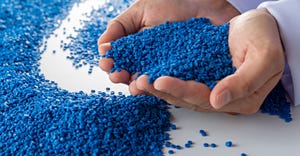Turn Your Press Into a Vibrational Molding Machine
September 16, 1998
Rheojector IV-A rides on top of existing molding processes, introducing low-frequency vibration into the melt. This provides accurate control over resin rheology and molded part morphology. Quality and productivity improve while product costs are reduced. No additional hardware is required. |
TherMold Partners has discovered what company officials describe as the long-sought-after Holy Grail of its rheomolding process technology. Rheojector IV is a patented process that uses existing molding machine hydraulics to oscillate the machine's injection screw during the injection or holding phases of the cycle, or both. Like previously developed rheomolding systems, Rheojector IV introduces vibration as an additional processing parameter to control the rheological behavior of the melt. Rheology control improves the properties and performance of molded parts, and the productivity of the machine.
However, unlike all previous TherMold systems, Rheojector IV uses zero additional hardware that has to be installed on molds or machines to induce melt vibration. It's only a control system. A control system that turns your existing machine into a Rheomolding machine.
TherMold has also developed the Rheojector IV-A process. It's designed to impart melt vibration in the mold by oscillating hot runner valve gate pins, as well as by moving the injection screw. This could obviate the need for sequential valve gating of large parts like automotive bumpers. Both Rheojector IV and IV-A allow infinite variations in the amplitude, frequency, and duration of the imparted vibration to achieve the desired control over the morphology of the molded products, minimizing shot-to-shot variation.
Strength and toughness can be increased, as can thermal properties, so you might be able to get away with using a lower grade, less-expensive material. Weld-line strength can be improved. Control over internal stress and warpage can be achieved, and voids can be eliminated. You can fine-tune fiber orientation in reinforced thermoplastic composites, and improve the optical properties in optical grades. And products can be run at faster cycles since process temperatures can be reduced. Thanks to the new process, you can do all this and more without having to do any hardware modifications whatsoever to your existing molds and machines.
Versatile Application
The new Rheojector system is designed to work with any material, molding machine, and molding machine control system, open or closed loop, regardless of its level of sophistication. It works as easily with a PLC as with a Risc-based supercomputer. The software for these systems can run on a 386 PC, or a laptop, or it can be specified right into an OEM's machine control system. It doesn't take up a lot of computing space, because the whole program's a matter of kilobytes, not megabytes.
All it involves is an eight-wire connection to the controller. After the vibration amplitude and frequency profile is fine tuned and loaded in memory for future runs, you just flip it on. It modifies existing machine hydraulics to impart a low-frequency vibration into the melt by any number of different ways. The screw, for instance, oscillates back and forth only by a centimeter or so, depending on shot size.
There's no wear and tear on the machine, since the process operates well within existing machine specs. Rheojector IV has been running in TherMold's lab on two older domestically built molding machines for the past two and a half years without causing any wear problems. And there are no additional maintenance or liability costs associated with additional hardware to worry about.
TherMold technical consultants will work closely with you to optimize rheomolding to particular applications. Licenses for Rheojector IV are granted on a per machine basis with fees that vary according to tonnage. Fees range from $5000 for machines up to 100 tons to $50,000 for a machine more than 5000 tons.
You May Also Like


